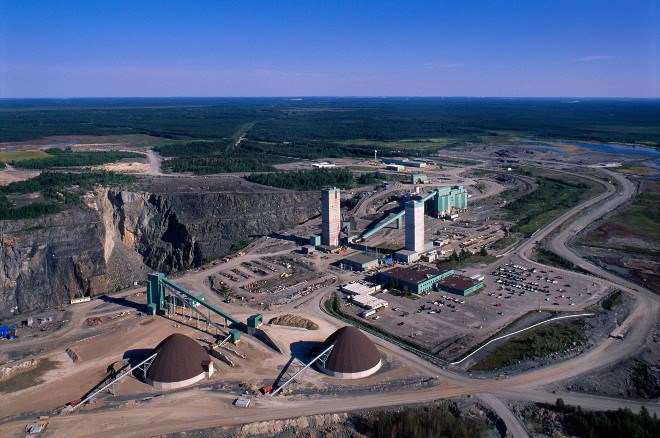“Safe. Simple. Green. Silent. Invisible.”
It’s a tagline Goldcorp has adopted for its developing Borden gold project, located near Chapleau, and it’s no coincidence that “safe” is the leading word in the statement.
Located in a pristine area on the shores of Borden Lake, the proposed mine is in the early stages of advanced exploration, but already several decisions have been made about the mine in keeping with Goldcorp’s efforts to minimize the impact on the environment and its workers.
“We intend to leave next to nothing for a footprint there,” said Peter Calnan, Goldcorp’s director of operational support and change management, during the 2017 Workplace Safety North mining conference in Sudbury.
“You will hardly know there’s a mine there as you drive by.”
Yet within its depths, the mine will be home to some sophisticated equipment and tools designed to make work safer for the 200 or so employees that will toil underground.
Paramount to its operation is a fleet of battery-operated electric vehicles, including jumbos, 14-tonne load-haul-dump (LHDs), bolters, service carriers, and emulsion loaders. Trucks delivering ore to the surface will initially be diesel-operated — electric technology for them isn’t yet available, but when it is, Goldcorp will switch them over, too, Calnan said.
The mine will eliminate compressed air underground, which can be a hazard, and will use the ventilation system to disseminate warnings instead.
Calnan said the company is considering electronic warning systems as a backup. In addition, the company has purchased an emergency ChargeAir system from Dräger that includes self-contained breathing apparatus, with cylinders that can be recharged, and a refuge that has a 48-hour capacity, which will be located at strategic locations throughout the mine.
“Everyone going underground will be trained, and personnel will have immediate access to breathing apparatus if required during an event, and then proceed to a refuge,” Calnan said. He called the mine an “innovative, fun place” that the company is excited about.
“There’s a bit of technology to catch up yet, in terms of the electric equipment, but the mine itself should be pretty cool.”
But safety innovation isn’t just for new mines. Like Borden, its decades-old neighbour in nearby Timmins, Glencore's Kidd Creek, is taking advantage of state-of-the-art innovation to keep it operational.
In 2016, the deepest base metal mine in the world celebrated its 50th year in operation, yet it’s slated for closure by 2021.
Though it may seem like an odd time to start implementing new technology, Iain McKillip, Kidd’s production engineering superintendent, said innovation has been instrumental in maintaining costs and safety in the deep, challenging mine.
“Where this whole idea started, back in 2011 or 2012, we were looking at a mine that was going to become more challenging in time, and we had to look at what we were going to do to stay safe and stay productive with the pressures increasing,” he said.
The mine currently has four automated LHDs underground, which remove the hazard for operators, who pilot the vehicles remotely from surface.
But the company discovered an added benefit in that the camera systems on the LHDs are better for operating around corners or in difficult conditions, and is now using the system to access stopes that have been labelled very high risk by the company.
“Without this system, these would not have been mineable,” McKillip said. “So we have some stopes where, given the ability to mine remotely, we can add them back into our reserves.”
The mine also uses AeroScout, a visibility system connected to the mine’s radio-frequency identification system that tracks equipment and personnel in real time, wherever they are in the mine. McKillip said this has obvious additional benefits in emergency situations.
“If we had an emergency underground, we can find equipment…and then we can also combine this with gas readings,” he said.
“If there’s a gas or fire event, we can see what areas and what people are most in need and at risk and address them first.”
Perhaps the technology with the biggest “cool” factor are the unmanned aerial vehicles — or drones — which PGM is using for mobile scanning and remote inspection.
The technology is accelerating so rapidly, McKillip believes it won’t be long before drones will be the primary tool used for those activities.
The next big leap forward will be to take the data it gleans from these systems, analyze it, and use it to make decisions.
The mine is doing that now in small increments — the ventilation-on-demand system tracks where personnel are in the mine and turns fans on and off accordingly — but “the possibilities are endless,” McKillip said.
“We keep adding technology, bringing in data faster than we can figure out how to integrate it together,” he said. “This is a role that mines are not set up for; we don’t have that many data analysts sitting around and figuring out how we can bring this data together to use it. It’s something that needs to be addressed and it’s going to be a role that will become more important in mining.”




